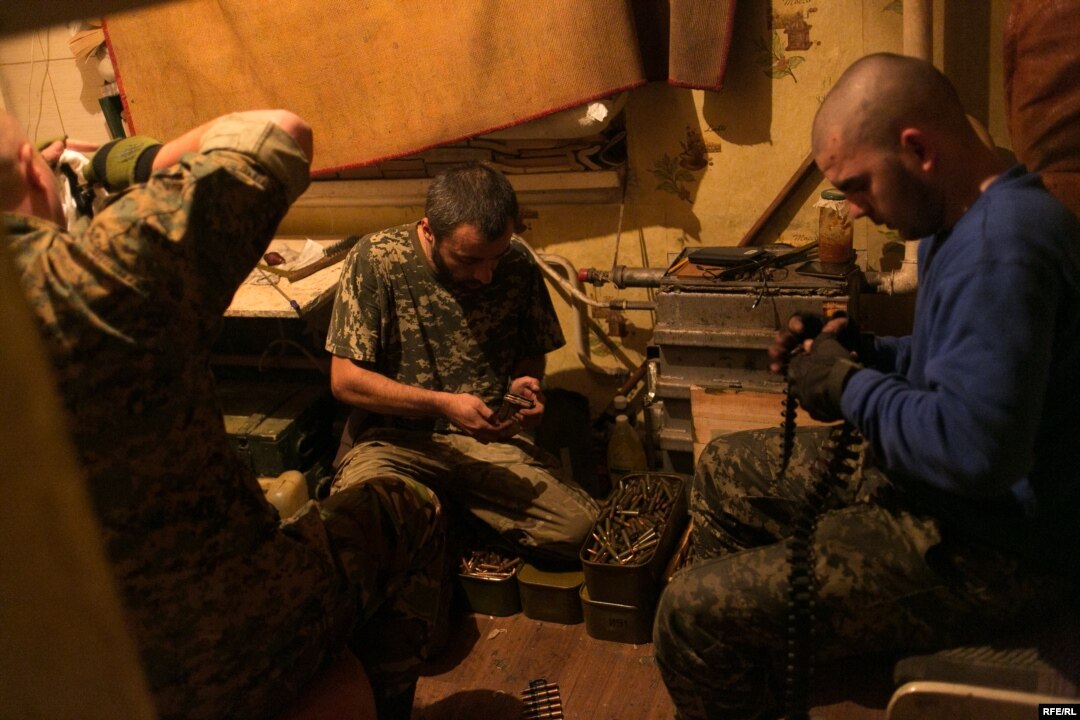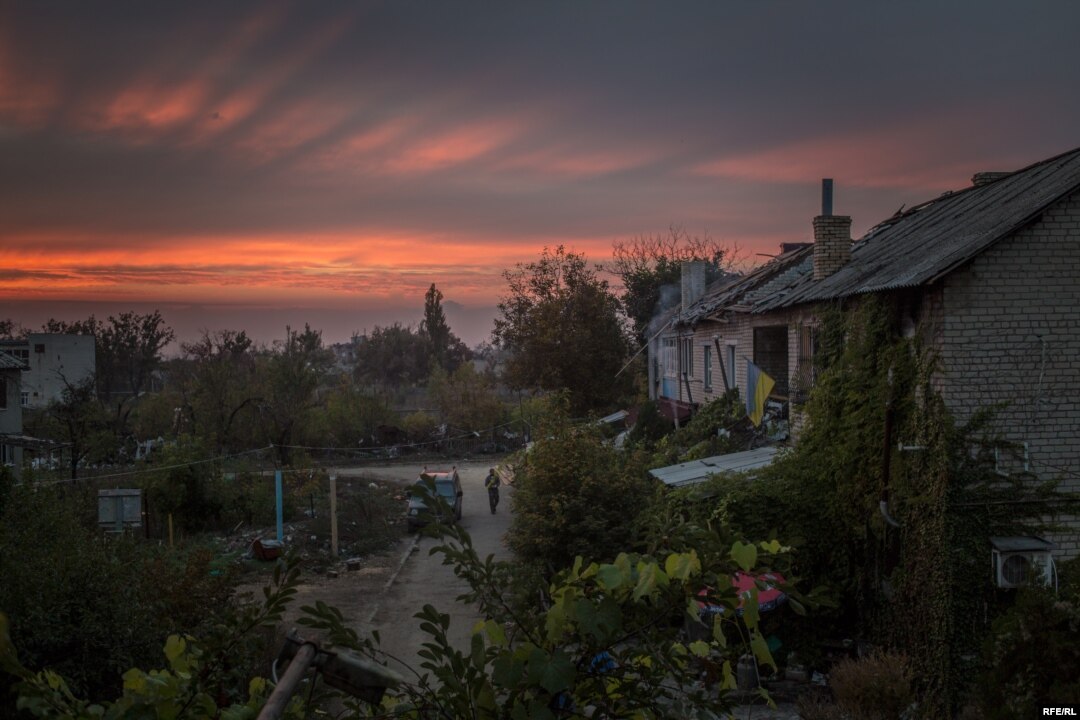A Week With Ukraine's Volunteer Fighters

The volunteers prepare their weapons after intelligence reports indicate a heavy night of fighting lies ahead. On the left is Avram, an Orthodox Jew from western Ukraine. The Russian media has portrayed Ukraine's leaders as fascists, but he says he has never experienced anti-Semitism in his country.

View over Maryinka, near Donetsk. These buildings are the frontline position for Ukrainian troops, with separatists just 400 meters away.

Posing next to a bullet-riddled fridge, this is "Chikatilo" -- nicknamed after a Soviet-era serial killer. Before the war, he was a taxi driver.

With few resources, volunteers need to be creative. Here, "Leshiy" is improvising a treatment for a comrade with a toothache. Prior to the war, Leshiy worked for 11 years as a manager for Nestle.
Earlier in the conflict, Leshiy was a sniper. "Nobody likes you when you're a sniper," he says, "not even the men you fight with. We scare everyone."
"Prom" is a 51-year-old former Soviet soldier. He spent 10 years in a Soviet prison for stabbing another man, but says he doesn’t regret it. "The Soviet Union was a tough place to live, and I did what I had to do to survive." He says he has no intention of leaving the front line. "They’ll have to take me out in a body bag, because I’m not leaving this place."
A soldier who goes by the nom de guerre "Nestor" stands in the kitchen. A native of Russia, Nestor's decision to fight on the Ukrainian side may be unusual, but is not unheard of.
A building in a once middle-class part of Maryinka, which was previously occupied by the separatists, now sits empty. Inside is an unexploded artillery shell that soldiers fear could detonate if they enter.
"Tuna" makes dinner. He once ran his own business, but joined the unit a few months ago and pays monthly salaries to some of the fighters out of his own pocket.
Tuna and two others open letters from Ukrainian children, which came as part of a package delivered by volunteers. The letters encourage them to keep fighting.
Avram pauses for a cigarette during a a firefight that has lasted for more than an hour. When he first arrived in eastern Ukraine, he was in a 12-man unit with just four rifles between them. "Some of us only had knives, some found grenades, and we just fought however we could."
On the left is "Little One," a servicemen in Ukraine's official armed forces, whose commander housed him with the volunteers. Days after this picture was taken, Little One was wounded in battle and will now spend two months in the hospital. He was a week away from being demobilized.
Little One inspects his weapon during the quiet of the daytime. Avram stands to his left.
Time to relax around the kitchen table, during a late-night lull in fighting. Tuna, on the left, has been at war for nearly five months now.
A soldier wears a bulletproof vest with a Star of David drawn on the front. Although the soldiers in this battalion are nationalists, they fight alongside a unit of Jewish volunteer soldiers who also declare themselves to be Ukrainian nationalists.
During the morning, fighting rarely occurs because OSCE monitors are observing the cease-fire. The men use the time to clean and maintain their weapons.
A destroyed Ukrainian tank on the road leading to the war-torn town of Pisky. The writing on the tank reads: "They gave their lives for Ukraine." Pisky was once a wealthy suburb of Donetsk but has been completely devastated by the war.

